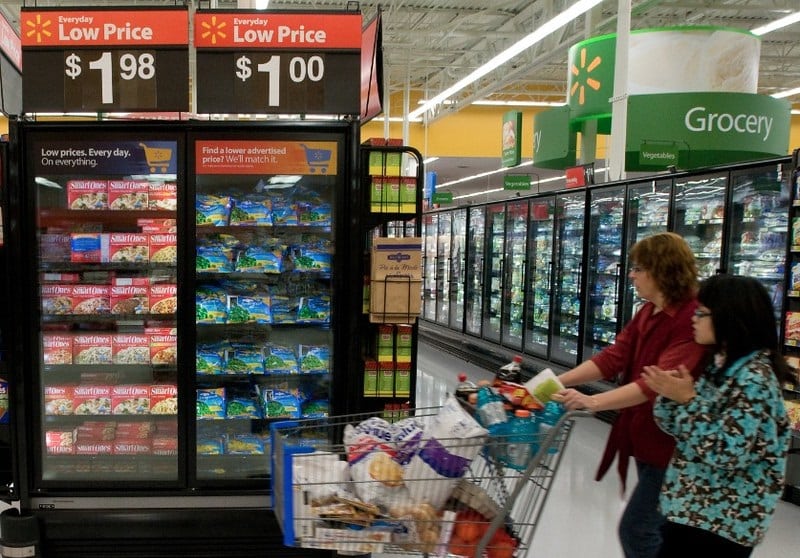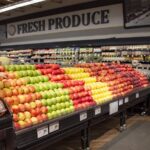
How many times have you gone to Target for one item and walked out with things you didn’t know you needed? Or visited Costco just to browse, and ended up with a cartful of stuff? Or you went to the grocery store determined to buy only what’s on sale that week, and ended up buying plenty of other items at full price?
It’s likely no accident. And a new study offers some insights into how we can resist unplanned purchases – and how retailers can entice us to make even more of them.
“The Negative and Positive Consequences of Placing Nonpromoted Products Next to Promoted Products” is due to be published in an upcoming edition of the Journal of Marketing. Its authors say a lot of what influences our purchasing decisions has to do with how promoted products are displayed in the store, and which full-price products are nearby.
You might go into the store intending to buy the peanut butter that’s on sale, and find that it’s right next to the full-priced jelly – so you buy them both. Or there’s a display of discounted crackers, but a full-priced box of cookies sitting nearby catches your eye, so you buy that instead. Now your cart contains three items, and only one of them is on sale.
“Consumers go into the store, and they do what’s easy. They don’t pay a lot of attention,” University of Colorado at Boulder marketing professor Donald Lichtenstein, a study co-author, said in a statement issued by the university. “They don’t scour the full shelf,” instead choosing “what is low-effort.”
And among the most low-effort choices are the promoted products placed on endcaps, in bins, or under bright yellow “sale” signs that are designed to draw your attention. It’s not just the promoted products themselves that we’re likely to buy, though, but the other, full-priced products that surround them.
“Your attention is drawn not only to that one product that’s on sale, but it also spills over to the products that are located nearby,” University of Connecticut marketing professor Christina Kan, the lead author of the study, said in a statement.
The researchers conducted several field tests and reached two separate conclusions. When a promoted product is placed among similar products that aren’t on sale, our attention is drawn to the lower-priced option and we’re less likely to purchase the full-priced alternatives. Makes sense. But when a promoted product is placed among dissimilar products that aren’t on sale, we’re more likely to buy those full-priced items.
The “proximal product,” just by being close to the promoted product, “benefits from the increased attention, which positively impacts its sales,” the report reads. “For example, imagine discounting a product like almond milk and surrounding it with novel flavors/versions of nonpromoted items (e.g., oat milk, soy milk),” the researchers write. “In this sense, price promotions benefit the promoted brand and also increase exposure to other high-margin items in the product category.” You may or may not buy the almond milk that’s on sale, but once the display catches your eye, you’re more likely to purchase the adjacent oat milk or soy milk that you didn’t even know you wanted.
“It is often assumed that price promotions draw attention toward the promoted brand and away from all other brands,” the report notes. “In contrast, our results show price promotions direct attention to the promoted brand and the brands that surround it.”
So for retailers, that means paying close attention not only to where promoted products are placed, but what’s placed next to them. A display of coffee that’s on sale, surrounded by other, full-priced coffee brands, is likely to depress sales of the full-priced items. And the retailer might actually prefer that you buy the expensive, more profitable coffee that’s not on sale. “So if you have high-margin products, you want to put those farther away from strong substitutes that are on promotion,” Kan explained. “For example, if one brand of hot dog is on sale, you’ll want to locate your high-margin dogs farther away from the sale dog.”
As a shopper, meanwhile, you need to know what retailers are up to when they plan displays of promoted products, so you don’t buy things you don’t need or spend too much. “If you want to save money, you should try searching the entire shelf rather than being drawn to whatever the grocery store manager wants you to look at,” Kan said.
So if you want to save money at the grocery store, you probably already know to keep a close eye on what items are on sale. But even more importantly, according to this study – be sure to keep an even closer eye on what isn’t.
Image source: Walmart










